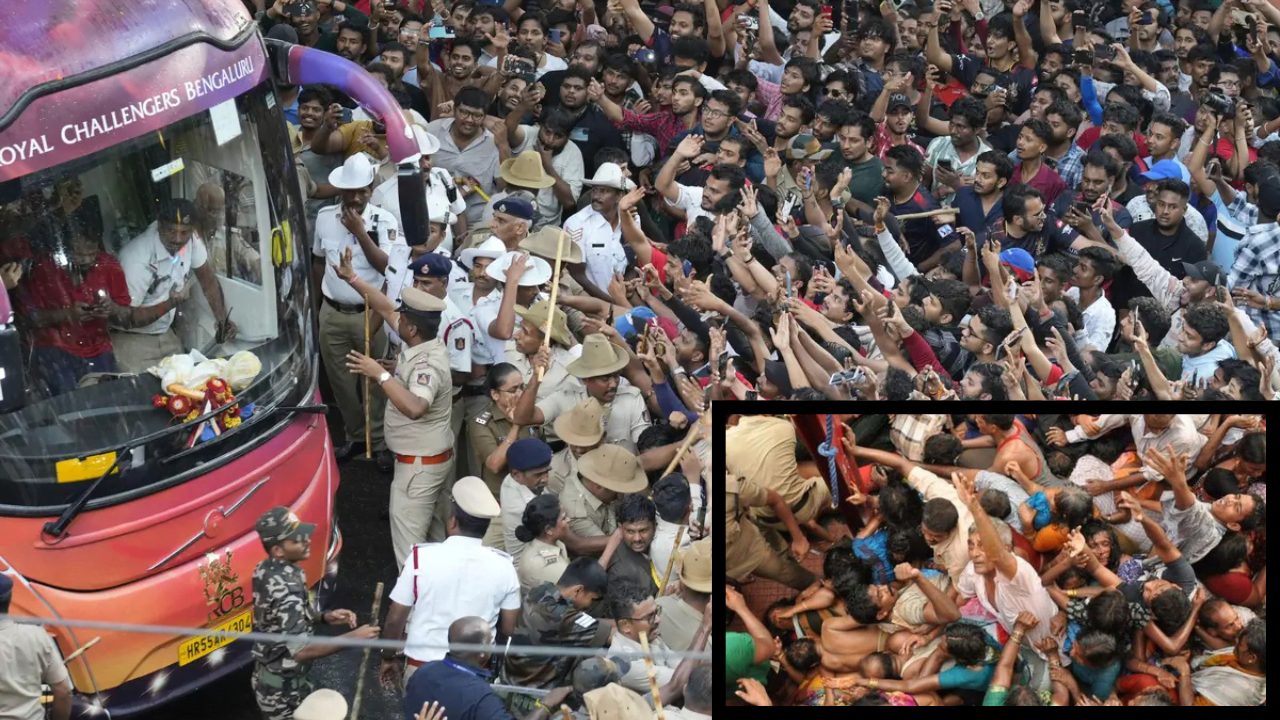 English
English

From temples to stadiums, and railway stations to political rallies, Why did India witness multiple deadly stampedes in 2025? What went wrong with crowd management, and are authorities learning the right lessons to prevent such tragedies?

RCB victory celebrations, Maha Kumbh Mela, and Andhra temple festival were among the worst incidents.
New Delhi: The year 2025 has been marked by a troubling rise in deadly stampedes across India, exposing glaring lapses in crowd control and public safety. From religious gatherings to political events and victory celebrations, the tragedies have claimed hundreds of lives and left thousands injured.
Experts say that while India’s population density and cultural enthusiasm for mass gatherings make such incidents likely, the scale and frequency in 2025 underscore systemic neglect in planning, coordination, and infrastructure readiness.
One of the deadliest stampedes of the year occurred on June 4, 2025, outside M. Chinnaswamy Stadium in Bengaluru. Thousands of fans had gathered to celebrate Royal Challengers Bengaluru’s maiden IPL title win, but chaos ensued when the crowd surged toward the stadium gates.
Eleven people lost their lives and over 50 were injured as barriers collapsed and people were trampled. Eyewitnesses described scenes of panic and helplessness as rescue efforts were delayed due to blocked exits.
Investigations later blamed poor coordination between RCB organizers, the police, and local authorities. In response, the Karnataka government suspended top officials and RCB announced a ₹25 lakh compensation to the families of the deceased through its “RCB Cares” initiative.
Andhra Pradesh Stampede: Tragic Stampede in Srikakulam, Andhra Pradesh Claims 9 Lives
In a fresh tragedy today, a stampede at a temple festival in Andhra Pradesh left at least eight people dead and dozens injured. The incident reportedly occurred when devotees rushed toward the sanctum for early morning darshan. Police sources cited overcrowding and inadequate barricading as the main causes.
Chief Minister Y. S. Jagan Mohan Reddy has ordered an inquiry and announced ex gratia for victims’ families. This marks yet another instance where religious fervor and mismanagement combined to create a deadly outcome.
Earlier this year, on February 15, 2025, a tragic stampede during the Maha Kumbh Mela in Prayagraj, Uttar Pradesh, claimed over 40 lives. The chaos broke out near a bathing ghat when a rumor about a collapsing bridge spread, causing panic among lakhs of devotees.
Authorities later admitted that despite multiple warnings from safety experts, crowd density far exceeded the area’s holding capacity. The incident raised serious questions about event preparedness and the efficacy of the crowd management systems put in place for one of the world’s largest religious gatherings.
CBI takes over Karur Stampede case that killed 41 at actor-politian Vijay’s rally
On September 27, 2025, a stampede at New Delhi Railway Station resulted in 12 deaths and over 30 injuries. The tragedy unfolded when passengers rushed to board a long-distance train after a platform change announcement.
Railway authorities have since promised safety audits across major stations. Experts have urged for better crowd monitoring technologies, such as AI-enabled surveillance and predictive crowd flow systems.
In October 2025, a political rally hosted by actor-turned-politician Vijay’s party in Karur district, Tamil Nadu, turned fatal after a sudden crowd surge led to nine deaths. The victims, mostly women, were caught in a narrow exit lane.
Witnesses claimed poor crowd control and lack of emergency exits worsened the situation. The state government has announced compensation and launched a review of safety measures for public rallies.
From festivals to politics and entertainment, 2025’s stampedes reveal a pattern of negligence and reactive governance. Safety experts are now calling for a National Crowd Management Policy that mandates real-time monitoring, clear evacuation protocols, and accountability for event organizers.
Unless India strengthens its public event management systems, experts warn, such tragedies could continue to repeat themselves year after year.